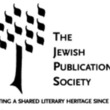Ruth: a migrant's tale
Description
More Details
Also in this Series
Published Reviews
Choice Review
Padres (comparative literature, Hebrew Univ. of Jerusalem) highlights the migratory dimensions of the story of the biblical book of Ruth. Ruth is a Moabite, childless widow who insists on accompanying her widowed mother-in-law, Naomi, to Naomi's hometown, Bethlehem. Padres begins with a commentary that highlights the story as an endorsement of self-giving love and perseverance in difficult situations. Subsequent chapters explore the story's "afterlife" in other eras. In late antiquity the rabbis considered Ruth the exemplary convert. The medieval Jewish mystics saw Ruth as one of the female images for the Zoharic Shekhinah (divine presence) in exile. In painting Ruth was first represented as a gleaner in Nicholas Poussin's Summer (1660--64), and she is best know in Jean-François Millet's The Gleaners (1857). Ruth became the ideal Zionist pioneer of early kibbutzniks and now in Israel is the exemplary migrant managing cultural adjustment. Padres notes that Allan Ginsberg's "Kaddish" for his own mother, Naomi, considers migratory displacement, Toni Morrison's Song of Solomon uses Ruth to explore the cultural displacement of African Americans in the great migration (South to North), and Guillermo Del Toro uses the 1960 movie The Story of Ruth in his film The Shape of Water. Summing Up: Recommended. Lower-division undergraduates through faculty; general readers --Regina A. Boisclair, emerita, Alaska Pacific University
Publisher's Weekly Review
This enlightening entry in Yale's Jewish Lives Series by Pardes (The Song of Songs), a professor of comparative literature at the Hebrew University of Jerusalem, dissects the biblical Ruth. Pardes suggests that though the Book of Ruth "offers the most elaborate tale of a woman to be found in the Bible," it is "astonishingly laconic" and requires those studying it to gather "bits and pieces from sparse scenes replete with lacunae" to fully understand it. Pardes is more than up to the challenge and details Ruth's biography, from her Moabite antecedents to her decision to stay with her late husband's mother in Bethlehem after his death rather than return to her homeland. Examining shifting historical interpretations of Ruth, the author relates how rabbis came to view Ruth as the "exemplary convert," as well as how pastoral paintings of her downplay her foreign origins. Pardes complicates Ruth's reputation as the quintessential convert by noting that the Bible makes no reference to conversion because non-Jews were not asked to convert at the time. The author effortlessly combines scholarly erudition with an accessible tone, providing an insightful exploration of the book's themes of otherness, kindness, and loyalty. This is a valuable contribution to the literature on Ruth. (Oct.)
Publishers Weekly Reviews
This enlightening entry in Yale's Jewish Lives Series by Pardes (The Song of Songs), a professor of comparative literature at the Hebrew University of Jerusalem, dissects the biblical Ruth. Pardes suggests that though the Book of Ruth "offers the most elaborate tale of a woman to be found in the Bible," it is "astonishingly laconic" and requires those studying it to gather "bits and pieces from sparse scenes replete with lacunae" to fully understand it. Pardes is more than up to the challenge and details Ruth's biography, from her Moabite antecedents to her decision to stay with her late husband's mother in Bethlehem after his death rather than return to her homeland. Examining shifting historical interpretations of Ruth, the author relates how rabbis came to view Ruth as the "exemplary convert," as well as how pastoral paintings of her downplay her foreign origins. Pardes complicates Ruth's reputation as the quintessential convert by noting that the Bible makes no reference to conversion because non-Jews were not asked to convert at the time. The author effortlessly combines scholarly erudition with an accessible tone, providing an insightful exploration of the book's themes of otherness, kindness, and loyalty. This is a valuable contribution to the literature on Ruth. (Oct.)
Copyright 2022 Publishers Weekly.



























